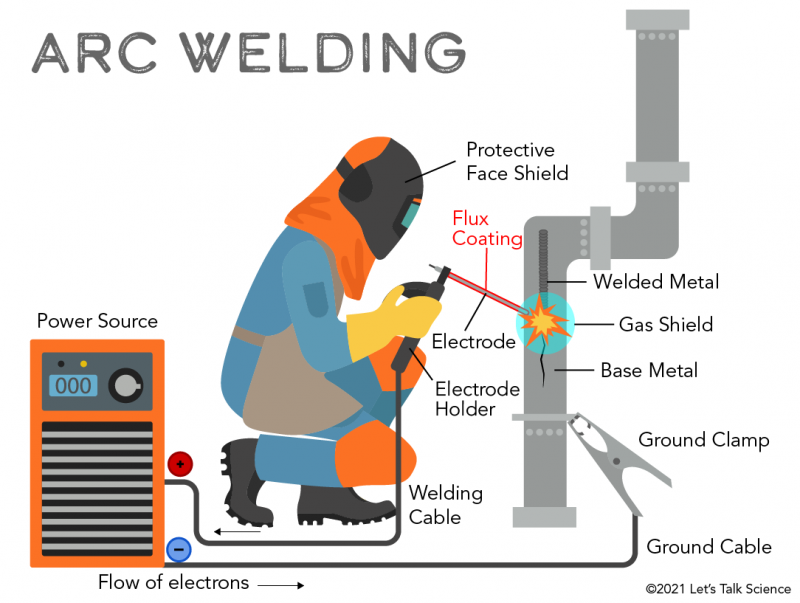Recognizing Welding WPS: Comprehensive Guide for Welders
Wiki Article
Getting Welding Quality: Unveiling the Secrets of WPS Execution and Optimization
In the realm of welding, accomplishing quality is a search that hinges on the precise application and optimization of Welding Treatment Specifications (WPS) By delving into the crucial aspects, approaches, challenges, and best methods connected with WPS, a globe of welding quality waits for those who are willing to explore its depths.Value of WPS in Welding
The Value of Welding Treatment Requirements (WPS) in the welding sector can not be overemphasized, working as the foundation for ensuring consistency, high quality, and safety and security in welding operations. A WPS provides comprehensive directions on exactly how welding is to be lugged out, consisting of crucial variables such as materials, welding procedures, joint design, filler metals, preheat and interpass temperatures, welding currents, voltages, traveling rates, and extra. By adhering to a well-defined WPS, welders can maintain harmony in their job, bring about consistent weld quality across different projects.
Crucial Element of WPS
Going over the indispensable parts of a welding treatment requirements (WPS) is essential for understanding its duty in welding operations. One critical aspect of a WPS is the welding procedure spec, which outlines the specific welding procedures to be made use of, such as gas tungsten arc welding (GTAW) or shielded steel arc welding (SMAW) By including these essential components right into the WPS, welding treatments can be standardized, making sure quality, efficiency, and safety in welding operations.Strategies for WPS Optimization

Secondly, training and credentials of welding personnel according to the certain needs of the WPS is paramount. Supplying thorough training programs and ensuring that welders are accredited to carry out treatments laid out in the WPS can lead to higher high quality welds and decreased rework.
Furthermore, leveraging innovation such as welding software program and surveillance systems can aid in optimizing WPS. These tools can assist in tracking variables, making sure specifications are within defined restrictions, and giving real-time responses to welders, enabling them to make immediate adjustments for improved weld quality.
Common Challenges and Solutions
Facing challenges in executing the methods for WPS optimization can impede welding operations' effectiveness and high quality. One typical challenge is inadequate training or understanding Read More Here of the welding procedure specifications (WPS) amongst the welding group. This can result in inappropriate execution of welds, resulting in defects and revamp. To resolve this, comprehensive training programs ought to be applied to ensure that all welders are skilled in applying and translating WPS properly.Another obstacle is the absence of proper documentation and record-keeping, which is crucial for WPS optimization. Without clear documents of welding specifications, materials made use of, and assessment results, it comes to be difficult to identify locations for enhancement and guarantee uniformity in welding processes. Implementing a durable paperwork system, such as electronic welding monitoring software program, can assist enhance record-keeping and facilitate information analysis for continuous improvement.
In addition, inconsistent welding equipment calibration and upkeep can position a substantial difficulty to WPS optimization. Normal devices checks, calibration, and upkeep routines need to be adhered to purely to make sure that welding parameters are precisely controlled and preserved within the defined tolerances (welding WPS). By resolving these common obstacles with proactive options, welding procedures can improve performance, quality, and general welding quality
Best Practices for WPS Execution
To ensure effective WPS execution in welding operations, adherence to market criteria and meticulous interest to information are critical. When starting WPS execution, it is essential to begin by extensively understanding the certain welding needs of the project. This entails a detailed testimonial of the welding procedure specifications, materials to be bonded, and the ecological problems in which the welding will occur.When the needs are clear, the next action is to select the suitable welding procedure that lines up with these requirements. This entails consulting the appropriate codes and requirements, such as those supplied by the American Welding Culture (AWS) or the International Company for Standardization (ISO), to make certain compliance and top quality.
Moreover, documenting the whole WPS execution process is necessary for traceability and quality assurance. Thorough records must be kept concerning welding specifications, material preparation, preheat and interpass temperature levels, welding consumables utilized, and any type of variances from the initial procedure. Routine audits and evaluations of the WPS can assist click for more identify locations for renovation and ensure ongoing optimization of the welding procedure.


Final Thought
In conclusion, the execution and optimization of Welding Procedure Specifications (WPS) is vital for accomplishing welding quality. By comprehending the key aspects of WPS, implementing reliable techniques for optimization, resolving common obstacles, and following ideal practices, welders can make sure top quality welds and secure working conditions. It is necessary for professionals in the welding sector to prioritize the appropriate execution my company of WPS to enhance general welding efficiency and achieve preferred end results.
The Significance of Welding Treatment Specifications (WPS) in the welding industry can not be overemphasized, offering as the backbone for making sure uniformity, quality, and security in welding procedures. A WPS gives comprehensive directions on just how welding is to be carried out, including necessary variables such as products, welding processes, joint design, filler steels, preheat and interpass temperature levels, welding currents, voltages, travel rates, and more. One important element of a WPS is the welding procedure specification, which outlines the particular welding processes to be used, such as gas tungsten arc welding (GTAW) or shielded metal arc welding (SMAW) By integrating these essential elements into the WPS, welding procedures can be standardized, making sure top quality, performance, and safety and security in welding procedures.
It is important for experts in the welding market to focus on the proper implementation of WPS to enhance overall welding performance and achieve desired end results.
Report this wiki page